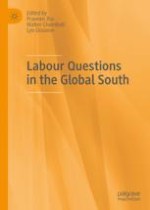2021 | OriginalPaper | Buchkapitel
8. From ‘Labour Dividend’ to ‘Robot Dividend’: Technological Change and Workers’ Power in South China
verfasst von : Yu Huang, Naubahar Sharif
Erschienen in: Labour Questions in the Global South
Verlag: Springer Singapore
Aktivieren Sie unsere intelligente Suche, um passende Fachinhalte oder Patente zu finden.
Wählen Sie Textabschnitte aus um mit Künstlicher Intelligenz passenden Patente zu finden. powered by
Markieren Sie Textabschnitte, um KI-gestützt weitere passende Inhalte zu finden. powered by
